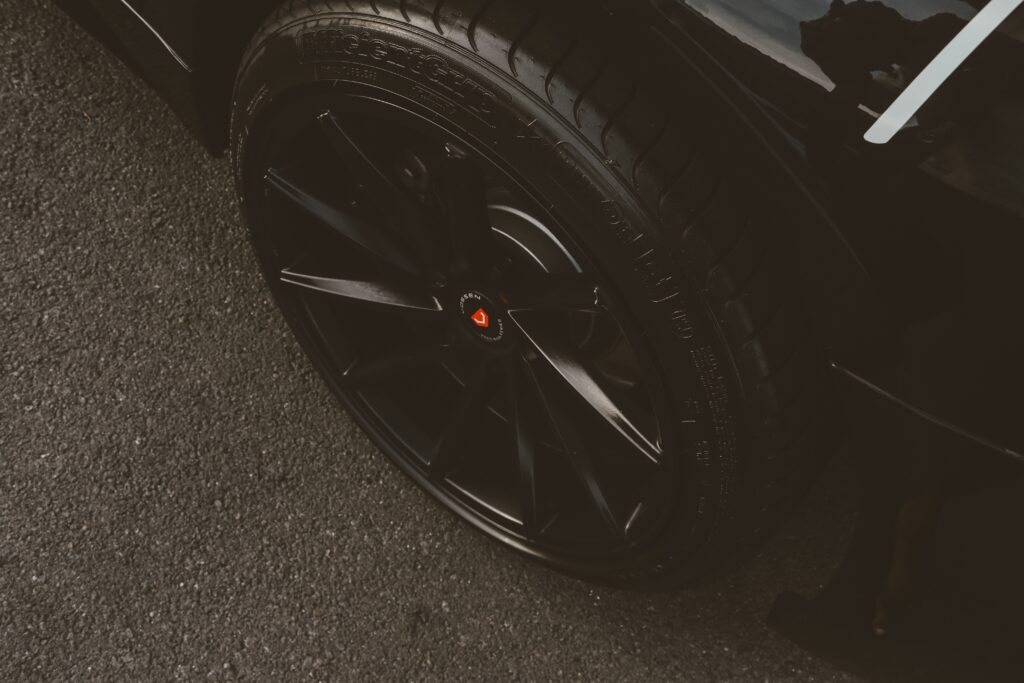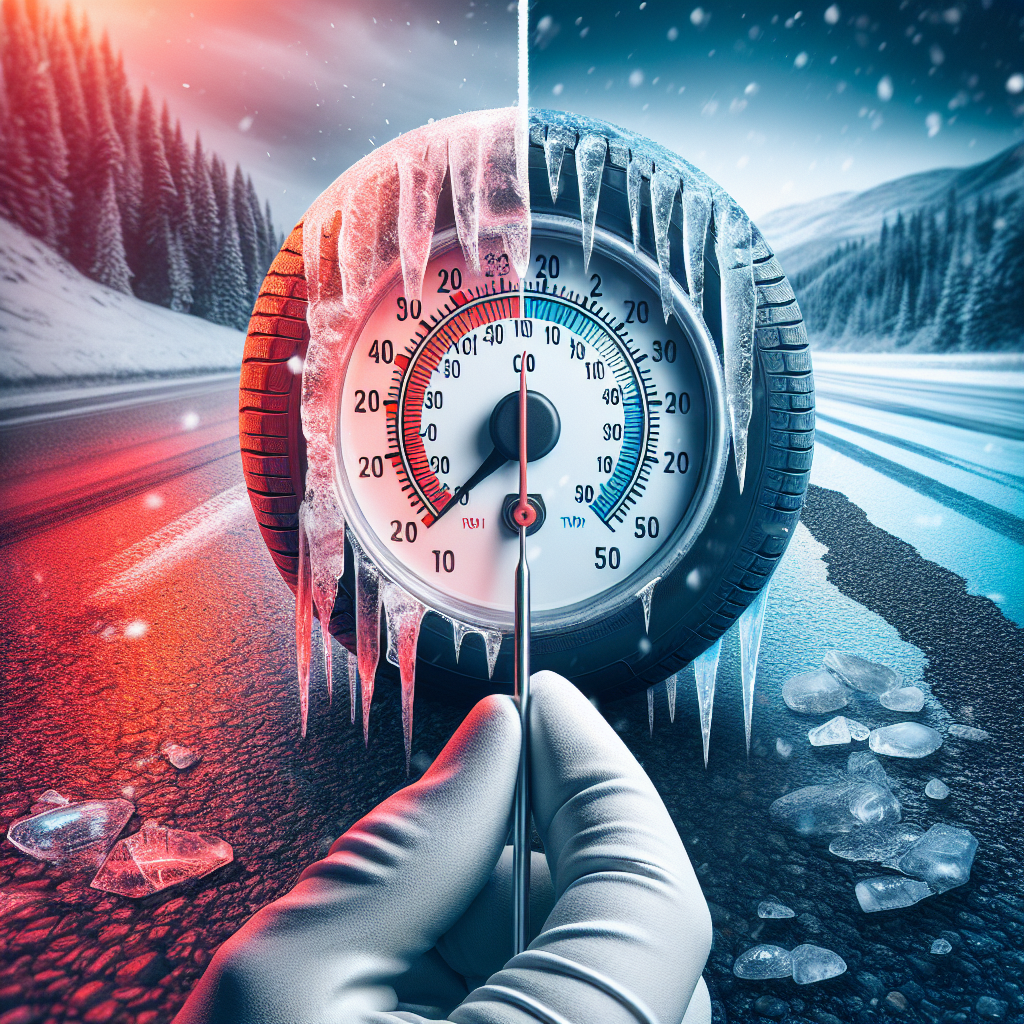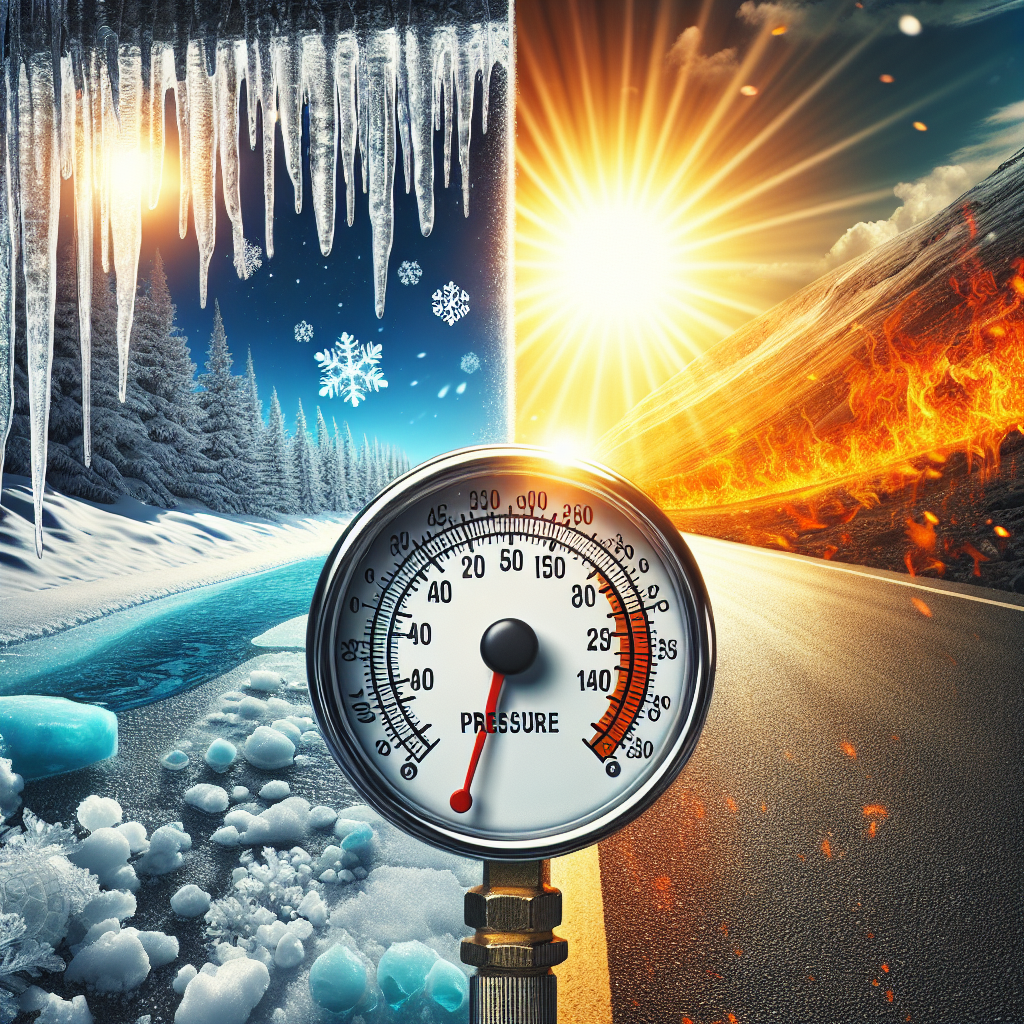Have you ever wondered if temperature changes can impact the pressure in your vehicle’s tires? Well, the answer might surprise you. Temperature fluctuations can indeed have a significant effect on tire pressure. When the temperature changes, the air inside the tire expands or contracts accordingly, leading to a change in pressure. This means that during hot weather, the air inside the tire expands, causing the pressure to increase. Conversely, during cold weather, the air contracts, resulting in decreased tire pressure. Understanding this relationship between temperature and tire pressure is crucial for maintaining optimal driving conditions and ensuring your safety on the road.

Factors Affecting Tire Pressure
Weather Conditions
Weather conditions have a significant impact on tire pressure. Changes in atmospheric pressure due to weather patterns such as high or low-pressure systems can cause fluctuations in tire pressure. Additionally, weather conditions such as rain, snow, or high humidity can affect tire pressure indirectly by altering the road surface and traction, leading to changes in tire contact and pressure distribution.
Temperature Changes
Temperature changes have a direct and immediate effect on tire pressure. As temperatures rise, the air inside the tire expands, resulting in an increase in tire pressure. Conversely, as temperatures drop, the air contracts, leading to a decrease in tire pressure. It is important to note that tire pressure can fluctuate even within a single day due to temperature variations.
Tire Construction
The construction of the tires themselves plays a vital role in tire pressure maintenance. Different tire types, such as summer tires, winter tires, and all-season tires, are designed with specific rubber compounds and tread patterns to perform optimally under different weather conditions. These variations in construction can affect how the tire responds to changes in temperature and external factors, ultimately influencing tire pressure.
Driving Habits
Your driving habits also have an impact on tire pressure. Aggressive driving, such as hard braking and rapid acceleration, can increase tire temperature and potentially lead to an increase in tire pressure. Overloading your vehicle beyond its recommended capacity can also place excessive stress on the tires, causing them to heat up and affect tire pressure. It is important to adopt safe and responsible driving habits to minimize the impact on tire pressure.
Understanding Tire Pressure
Importance of Proper Tire Pressure
Maintaining proper tire pressure is crucial for several reasons. Firstly, it ensures optimal handling and performance of your vehicle. Properly inflated tires offer better traction, enhancing your ability to steer, brake, and maneuver safely. Secondly, proper tire pressure contributes to fuel efficiency. Underinflated tires can increase rolling resistance, requiring your vehicle to work harder and consume more fuel. Lastly, adequate tire pressure is essential for tire longevity. Overinflation or underinflation can lead to uneven tire wear, decreased tread life, and potential tire failure.
Recommended Tire Pressure
Every vehicle has a recommended tire pressure specified by the manufacturer. This information is typically found on a sticker located on the driver’s side door jamb or in the owner’s manual. The recommended tire pressure is determined based on factors such as vehicle weight, tire size, and intended usage. It is important to adhere to these recommendations for optimal performance and safety.
Effects of Underinflation and Overinflation
Both underinflation and overinflation can have negative consequences. Underinflated tires result in increased rolling resistance, causing decreased fuel efficiency and premature tire wear on the outer edges. It also compromises handling, increasing the risk of tire failure and accidents. On the other hand, overinflated tires decrease traction, leading to reduced braking capability and compromised handling on wet surfaces. Additionally, overinflation can result in uneven tire wear at the center of the tread.
Effect of Temperature on Tire Pressure
Expansion and Contraction of Air
Temperature directly impacts the air inside the tire. When exposed to heat, the air molecules gain energy and move more rapidly, resulting in expansion. This expansion leads to an increase in tire pressure. Conversely, when the temperature drops, the air molecules lose energy and slow down, causing the air to contract, resulting in a decrease in tire pressure. It is important to consider these temperature-related changes to maintain optimal tire pressure.
Scientific Explanation
The scientific explanation behind the effect of temperature on tire pressure lies in the ideal gas law. According to this law, the pressure of a gas is directly proportional to its temperature. As the temperature increases, the gas molecules move faster, colliding with the walls of the tire more frequently and exerting greater pressure. Conversely, as the temperature decreases, the gas molecules slow down, resulting in reduced pressure.
Tire Pressure Variation
Temperature variations can cause significant tire pressure fluctuations. For every 10-degree Fahrenheit change in temperature, tire pressure can increase or decrease by approximately 1 to 2 PSI (pounds per square inch). These changes may seem small, but they can have a noticeable impact on tire performance and safety. It is essential to regularly monitor and adjust tire pressure to account for temperature variations.
Summer Season and Tire Pressure
Higher Ambient Temperature
During the summer season, the ambient temperature is generally higher. As a result, the air inside the tire heats up more quickly and expands, leading to an increase in tire pressure. It is important to monitor tire pressure more frequently in hotter weather conditions to ensure it remains within the recommended range.
Increased Heat Build-up
In addition to the higher ambient temperatures, summer driving conditions can also lead to increased heat build-up in the tires. Long-distance drives, frequent braking, and high speeds can generate additional heat, further impacting tire pressure. Maintaining proper tire pressure becomes even more crucial during the summer season to prevent overinflation and potential tire failure.
Implications for Tire Pressure
The higher temperatures and increased heat build-up during the summer season can result in overinflated tires. Overinflation reduces the tire’s contact patch with the road, leading to compromised traction and handling. It is important to regularly check and adjust tire pressure to ensure optimal performance, safety, and fuel efficiency during the summer months.

Winter Season and Tire Pressure
Lower Ambient Temperature
The winter season brings lower ambient temperatures, which can cause the air inside the tire to contract. This contraction leads to a decrease in tire pressure. It is essential to monitor and maintain proper tire pressure during the winter season, as cold temperatures can result in underinflated tires.
Cold Weather Effects
Cold weather affects tires in multiple ways. Firstly, lower temperatures reduce the flexibility of the rubber compounds in the tire, potentially compromising traction and grip on icy or snowy surfaces. Secondly, the cold can cause tire pressure to drop, resulting in underinflated tires. Underinflation reduces stability, handling, and fuel efficiency, and increases the risk of uneven tread wear.
Potential Tire Pressure Loss
Winter weather conditions can lead to continuous tire pressure loss. Freezing temperatures can cause the air inside the tire to contract, resulting in a decrease in tire pressure over time. To minimize the impact of temperature-related pressure loss during the winter season, regular tire pressure checks and adjustments are necessary.
Measuring Tire Pressure
Types of Tire Pressure Gauges
Several types of tire pressure gauges are available for measuring tire pressure. The most common types include digital gauges, dial gauges, and stick gauges. Digital gauges provide a digital display of the tire pressure reading, while dial gauges and stick gauges rely on analog mechanisms to indicate the pressure level. Choose a gauge that is easy to use and provides accurate readings for proper tire pressure maintenance.
Proper Technique for Measurement
To measure tire pressure accurately, follow these steps:
- Ensure the tires are cool. Tire pressure should be measured when the tires are cold, as the pressure readings can differ when the tires are hot.
- Remove the valve cap from the tire valve stem.
- Place the tire pressure gauge firmly onto the valve stem and press down to create an airtight seal.
- Read the tire pressure measurement displayed on the gauge.
- Repeat the process for all tires, including the spare tire.
- Compare the measured tire pressures with the recommended tire pressure specified by the manufacturer.
Frequency of Check-ups
Regular tire pressure check-ups are vital for maintaining proper tire pressure. It is recommended to check tire pressure at least once a month and before long trips. Additionally, during extreme weather conditions, such as the transition from summer to winter or vice versa, more frequent checks may be necessary to adjust tire pressure accordingly.

Recommended Tire Pressure Maintenance
Adhering to Manufacturer’s Recommendations
To ensure optimal tire performance, safety, and fuel efficiency, it is crucial to adhere to the tire pressure recommendations specified by the vehicle manufacturer. These recommendations take into account factors such as load capacity, tire size, and intended usage of the vehicle. Following the manufacturer’s recommendations helps maintain proper tire pressure and prolong tire life.
Adjusting Tire Pressure with Temperature Changes
As previously mentioned, temperature fluctuations affect tire pressure. To compensate for these temperature-related changes, it is important to adjust tire pressure accordingly. During temperature increases, such as in the summer, tire pressure may rise, requiring release of excess air to bring it back to the recommended level. Conversely, during temperature decreases, such as in the winter, tire pressure may drop, necessitating air addition to reach the recommended level.
Accounting for Seasonal Variations
Different seasons bring varying weather conditions and temperature ranges. It is essential to account for these seasonal variations in tire pressure maintenance. Regularly monitor tire pressure and adjust it based on the weather conditions and ambient temperatures. This proactive approach will help optimize tire performance, handling, and safety throughout the year.
Common Misconceptions
Linear Relationship between Temperature and Pressure
Contrary to common belief, the relationship between temperature and tire pressure is not linear. Although temperature changes do cause variations in tire pressure, the rate at which these changes occur is not constant. For every 10-degree Fahrenheit change in temperature, tire pressure typically fluctuates by approximately 1 to 2 PSI. It is important to regularly check tire pressure, as temperature changes can have a more significant impact than anticipated.
Immediate Tire Pressure Loss
Temperature changes do not result in immediate tire pressure loss. Tire pressure adjustments occur gradually as the air inside the tire expands or contracts due to temperature variations. While rapid changes in temperature can lead to faster pressure adjustments, it is unlikely to experience instantaneous loss or gain of tire pressure solely due to temperature fluctuations. Regular maintenance and monitoring are necessary to ensure tire pressure remains within the recommended range.

Consequences of Incorrect Tire Pressure
Impact on Fuel Economy
Incorrect tire pressure has a direct impact on fuel economy. Underinflated tires increase rolling resistance, forcing the engine to work harder to propel the vehicle forward. This increased workload results in higher fuel consumption and reduced fuel efficiency. Maintaining proper tire pressure helps optimize fuel efficiency and reduce unnecessary fuel expenses.
Tire Wear and Longevity
Improper tire pressure can significantly affect tire wear and longevity. Underinflation leads to increased tread wear on the outer edges of the tire, while overinflation causes central tread wear. Uneven tire wear reduces the lifespan of the tires and necessitates premature replacement. By maintaining proper tire pressure, you can ensure even wear across the tire surface, extend tread life, and maximize tire longevity.
Vehicle Safety
Proper tire pressure is crucial for vehicle safety. Underinflated or overinflated tires compromise handling, stability, and braking performance. These issues increase the risk of accidents and decrease overall road safety. By regularly monitoring and maintaining proper tire pressure, you can ensure your vehicle performs optimally and enhance the safety of your travels.
Tips to Maintain Proper Tire Pressure
Regular Tire Inspections
Perform regular tire inspections to visually assess tire condition and detect any signs of damage or wear. Look for cuts, bulges, or abnormal tread wear patterns. Additionally, inspect the valve stems for any signs of damage or leakage. By identifying potential issues early, you can address them promptly and prevent tire pressure problems.
Monitor Pressure Changes
Check tire pressure at regular intervals, preferably at least once a month. Monitor pressure changes and compare them to the recommended tire pressure provided by the manufacturer. If you notice significant fluctuations or tire pressure consistently deviating from the recommended range, consult with a professional to identify any underlying issues.
Weather-Specific Tire Pressure Adjustments
Adjust tire pressure according to weather conditions. During temperature increases, release excess air to maintain the recommended tire pressure. Conversely, during temperature decreases, add air as needed to reach the recommended level. Be proactive in adjusting tire pressure to optimize tire performance and safety based on the prevailing weather conditions.
In conclusion, tire pressure is influenced by various factors, including weather conditions, temperature changes, tire construction, and driving habits. Understanding the importance of proper tire pressure, recommended maintenance, and the consequences of incorrect tire pressure is crucial for optimal vehicle performance, safety, and fuel efficiency. By regularly monitoring and adjusting tire pressure as needed, adhering to manufacturer recommendations, and considering seasonal variations, you can ensure your tires are in top condition, contributing to a smooth and safe driving experience.


